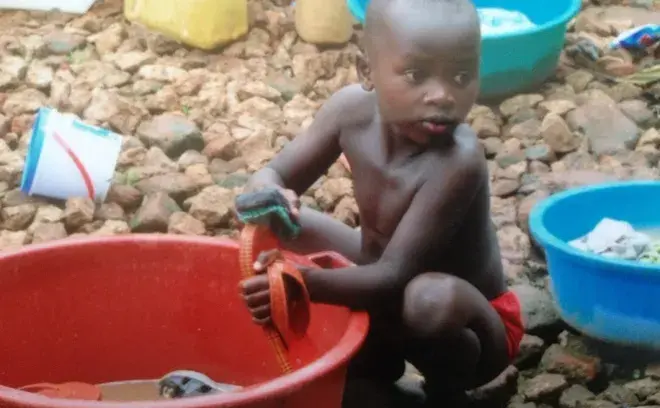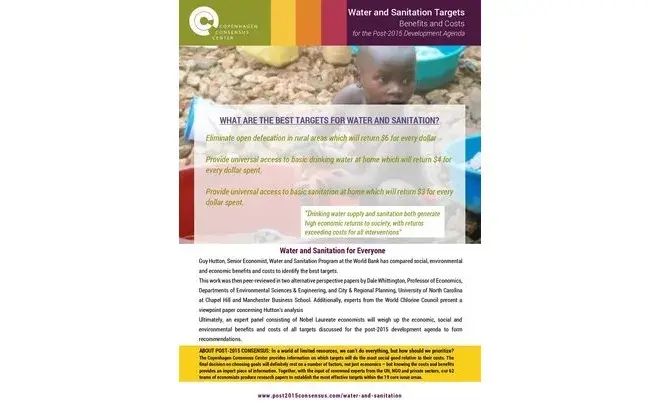Water and Sanitation
Those of us lucky enough to live in the industrialized world typically take for granted simple things like running water, flush toilets and going to the bathroom in privacy. Yet, 750 million people have no access to any type of basic source of drinking water, 2.5 billion – almost half the developing world – lack even a basic latrine and 1 billion resort to what is politely known as open defecation.
The good news is that there has been improvement - over the past 25 years, more than 2 billion have gained access to better water and almost 2 billion to sanitation.
What about water and sanitation for everyone?
By 2030, this will mean providing an extra 2.3 billion people with water, through installing more wells, boreholes and springs. It will also mean serving 3 billion people with basic sanitation; using a combination of low-cost solutions such as pour-flush, dry pit latrines and shared flush toilets in urban areas. On the way, simply avoiding open defecation with shared latrines is possibly the most effective best target.
None of this is cheap, with water and sanitation for everyone likely to cost $45 billion annually. But the result is per year, 170,000 fewer deaths from contaminated water, and 80,000 fewer deaths from improper sanitation – with children benefiting the most. Additionally, it would save people, mainly women, up to 40 min per day when collecting water and 15min per day when going to defecate. Avoiding open defecation is even cheaper at $13 billion annually.
For every dollar spent on providing basic drinking water and sanitation we would do $4 and $3 worth of good respectively. Eliminating open defecation in rural areas returns $6 for every dollar spent.
Summary of the targets from the paper
| Water and Sanitation | |||
|---|---|---|---|
| Target | Annual Cost $b | Annual Benefit $b | Benefit for every dollar spent |
| Eliminate open defecation (rural only) | $13 | $84 | $6 |
| Universal access to basic drinking water at home | $14 | $52 | $4 |
| Universal access to basic sanitation at home | $31 | $92 | $3 |
Scroll down to read our set of reports examining water and sanitation targets for the post-2015 development agenda, written by leading economists and experts.
Assessment Paper
Guy Hutton, Senior Economist for the World Bank’s Water and Sanitation Program, writes a paper examining the costs and benefits of ending open defecation and providing universal access to water and sanitation. He finds that in general, it is more cost-beneficial to serve rural populations since they save more time from having improved access to water and sanitation facilities. Additionally, it is more effective to provide for the poorest, because they start with poorer health and have greater capacity to improve from access. Regardless of location and income, providing water and sanitation passes a cost-benefit test.
<We find>… higher benefit-cost ratios in lower income quintiles, accounted for by the higher health impacts in these population groups (due to worse baseline situation, hence higher capacity to benefit). This is an interesting finding – and one compelling reason to serve the poorest first.”
- Guy Hutton
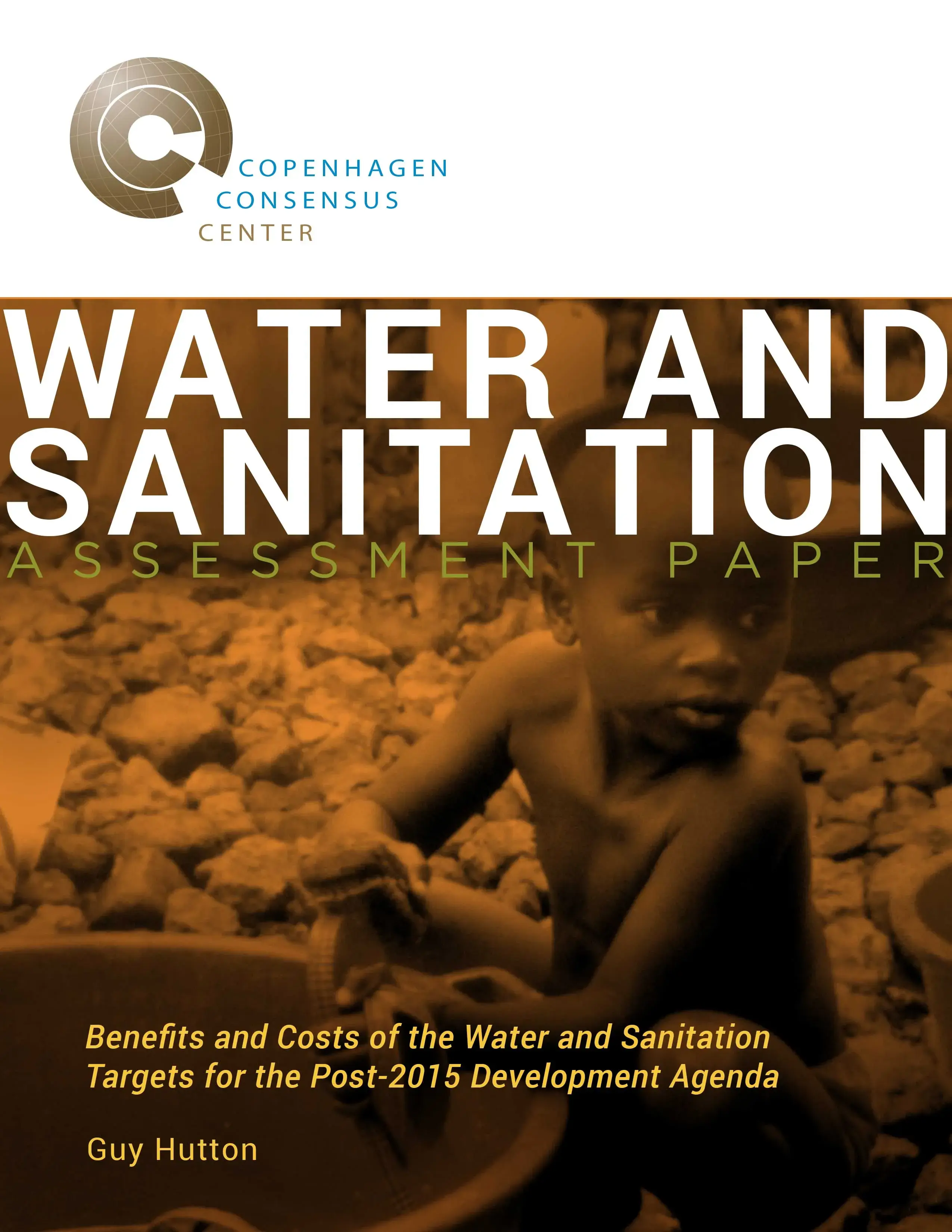
Perspective Paper
Dale Whittington, Professor, Departments of Environmental Sciences & Engineering at University of North Carolina, makes a critical examination of the assessment paper, noting several challenges with the benefit-cost calculations. In particular, he outlines concerns with how time savings are calculated, the likelihood of 100% take up of the interventions, assumptions around the cost base and how sensitivity analysis is applied in the paper. Despite these issues, Whittington agrees that water and sanitation interventions are likely to be cost-beneficial, though very sensitive to local conditions.
Is there any evidence that rural households in India (where open defecation is common) would be willing to pay US$5 per month for the time savings associated with a shift from open defecation to a basic latrine? There is no such evidence that I know of. Indeed, there is evidence that many people prefer to practice open defecation rather than use a simple private or shared latrine”
- Dale Whittington
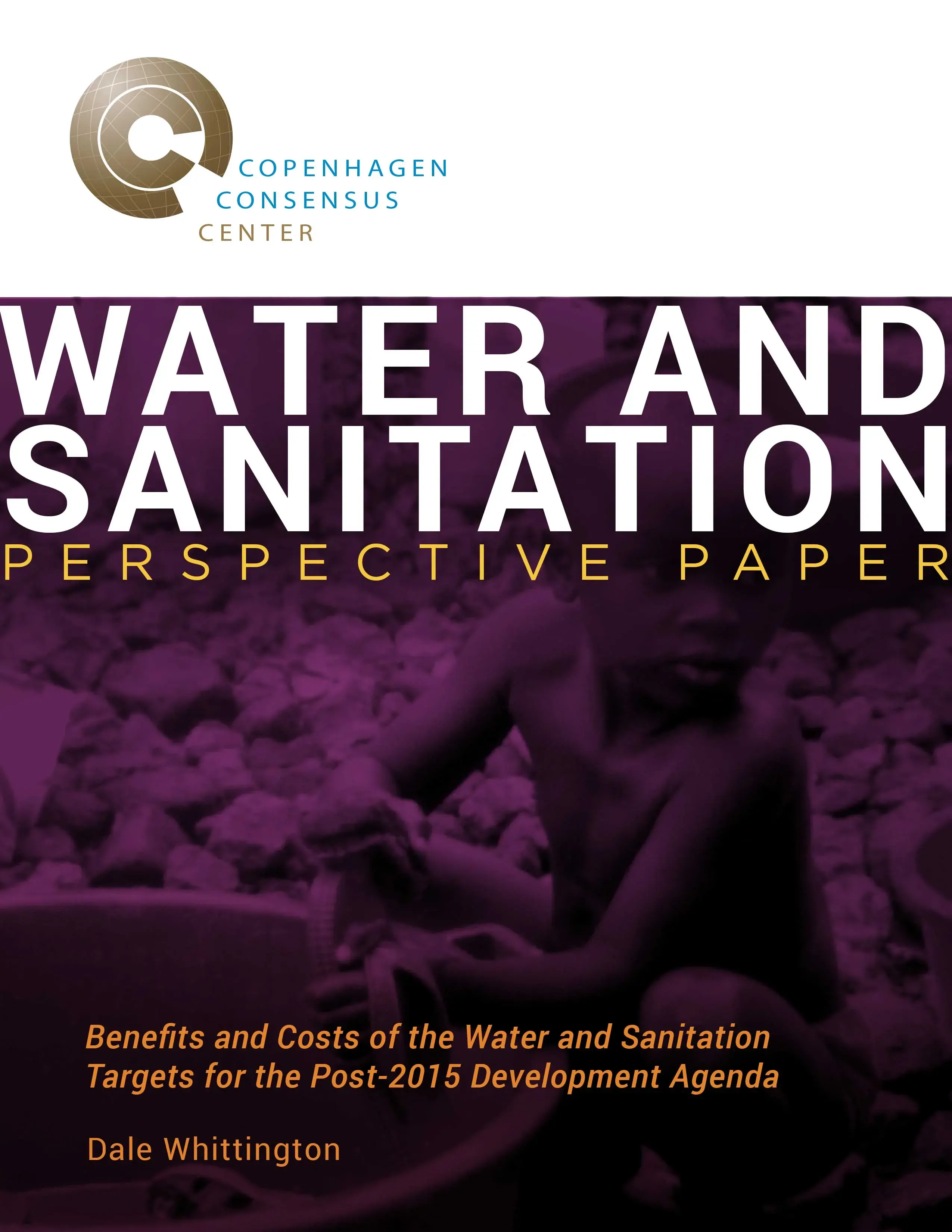
Perspective Paper
Dale Whittington also writes a stand-alone paper on water resources management targets. In a thought-provoking discussion he argues that global average benefit-cost ratios for water resource management investments are not useful because investments must be analyzed at the local level. Secondly, he suggests that it would be wrong for low-income countries to prioritize health interventions over large scale water infrastructure, since the latter are a necessary pre-requisite for the former.
It does not make economic sense to present an average benefit-cost ratio for all possible dams that could be built around the world because all of these do not need to be built. There are investments in water resources management with high returns and investments with low returns, just as in every other sector of the economy, and good management demands selecting the best investments and bypassing the others.”
- Dale Whittington
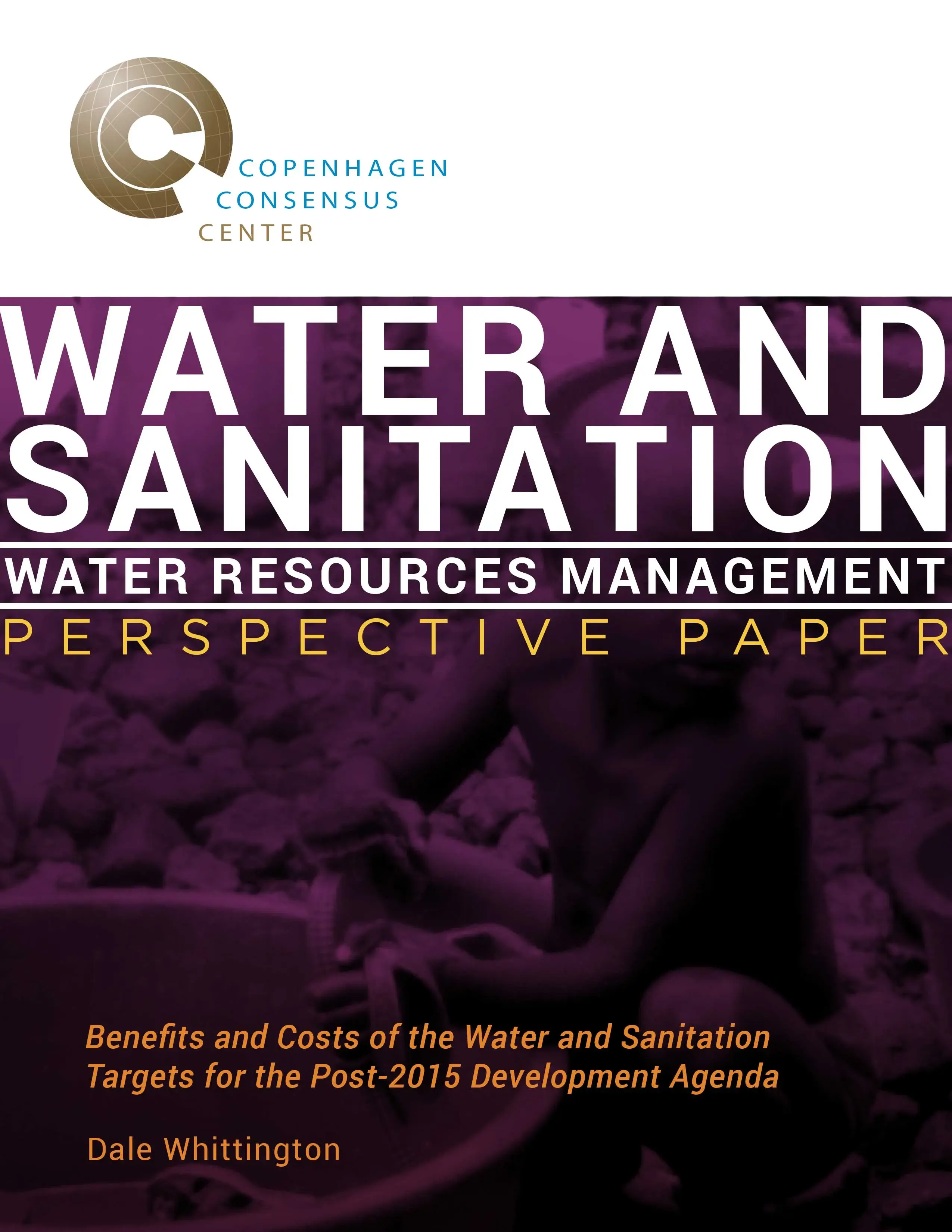
Viewpoint Paper
Mary Ostrowski and Allan Jones of the World Chlorine Council present their views on the 'safely managed drinking water service' aspect of the proposed WASH targets. They argue that the most effective way to check drinking water quality is testing for the chlorine residual to ensures that the water is safe and free from disease causing germs.
WCC proposes that the proposed global Sustainable Development Goal for safe drinking water include a measurable, science-based indicator of treatment to destroy waterborne pathogens - the chlorine residual."
- Mary Ostrowski and Allan Jones
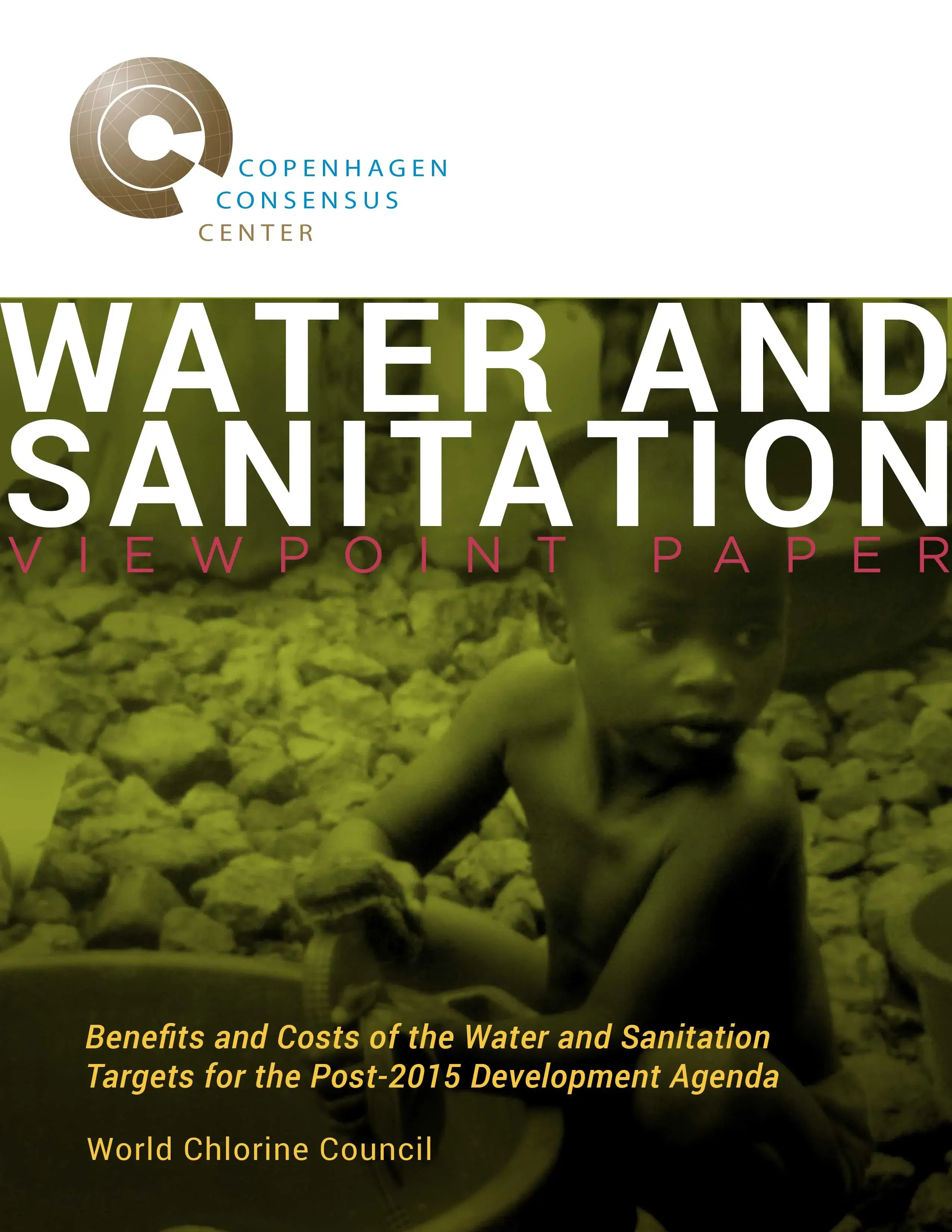
The Post-2015 Consensus project brings together 60 teams of economists with NGOs, international agencies and businesses to identify the targets with the greatest benefit-to-cost ratio for the UN's post-2015 development goals.



